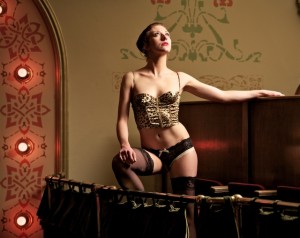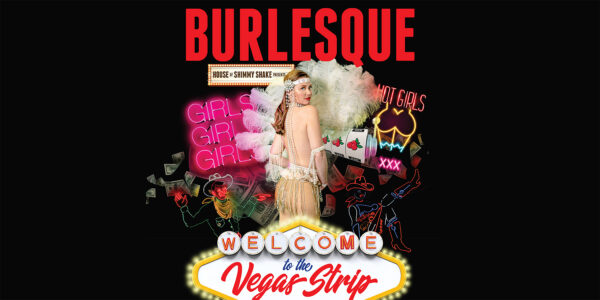
17 Mar Telluride Theatre: Cheap Thrills, 3/23 & 3/24 + Vegas Strip, 3/25 & 3/26!
Telluride Theatre’s BURLESQUE is live at the historic Sheridan Opera House, 8 p.m. nightly. Two totally different shows. Four nights of fun! To purchase tickets, please visit TellurideTheatre.org
MARCH 23 & 24 – CHEAP THRILLS
$35, $40, $100 VIP TABLE SEAT
MARCH 25 & 26 – THE VEGAS STRIP
$45, $55, $150 VIP TABLE SEAT
AGES: 21+ only.

Starting out as a class 12 years ago for 11 women, Telluride Theatre’s annual fundraiser has grown into a winter of education, creation and rehearsals, culminating in home-grown performances. Burlesque resurrects the raucous and raunchy variety shows of Telluride’s vaudeville era, featuring dancing, comedy, and talented local women. 30+ ladies are participating in Burlesque this year (and a few brave men).
The Beginning Class has 13 women of all ages learning the art of Burlesque throughout the winter. Over 6 weeks of classes, taught in collaboration with the Ah Haa School, the ladies learned to shimmy, shake, strut, strip and tease.
Their graduation show is the CHEAP THRILLS performances Wednesday March 23 and 24.
Sasha Cucciniello and Melissa Harris have taught the class together since its inception.
“Burlesque has become its own family in Telluride. It’s a rite of passage for many, a way to explore our fierce feminine sensual power. Burlesque is a celebration, women coming together to honor who we are, our bodies and femininity,” states class founder and show director Sasha Cucciniello. “The women who take this class all take it for different reasons. But everyone comes out changed. We all do.” CHEAP THRILLS is a showcase of their work; each student comes up with a character, creates their own piece and even makes their own pasties as part of the class.
On Friday, March 25 and Saturday, March 26, THE HOUSE OF SHIMMY SHAKE—the “advanced” women of Burlesque—present a new original Burlesque show, THE VEGAS STRIP, a romp through sin city. All things Vegas… strip!

“After a few years of performing Burlesque we had many women who wanted to move to the next level; start performing at a higher level. That is when the “advanced” show was started. We came up with the troupe name The House of Shimmy Shake and have continued to grow. The women in the HOUSE OF SHIMMY SHAKE are serious Burlesque performers who dedicate their lives to the art form,” Cucciniello says. “Every year there is a small steering committee who comes up with the theme of the show. Vegas has been on the table for a few years now and we just thought everyone needed an over-the-top celebration as we are getting back to inside. This feels like a totally different, slick, sexy show. We have changed our format a bit and are adding some extra sexy surprises for the audience.”
Burlesque: A brief history

What’s the difference between a burlesque performer and a stripper?”
Burlesque shows often include stripping, but your average strip club will not include any burlesque. But a favorite answer to this question (courtesy of A. Randy Johnson) is “strippers make money; burlesque dancers make costumes.”
The word “burlesque” comes from the Spanish or Italian word “burla” which means to mock, trick, or joke. The original use of the word burlesque dates back to the 16th and 17th century when it was used to describe parodies and grotesque or ridiculous imitations, often of authors or artists of the time.
Victorian burlesque was essentially musical theater parody of popular ballets, operas and plays. For example, Shakespeare plays were common subjects. Attractive women were included, often dressed as men, but the shows were only moderately risqué in style. At this stage there was no nudity or striptease involved in burlesque. The Victorian burlesque humor was more similar to that of the English pantomime than the burlesque you see on stage today.
When did nudity first become part of burlesque?
In the late 19th century, shows featuring what we now call “striptease” started appearing simultaneously and independently in both America and Paris. In America, stripping was seen on both the vaudeville and burlesque circuits, with the trapeze artist Charmion famously performing a “disrobing” act on stage in 1896, later caught on film by Edison. In Paris theaters such as the Moulin Rouge, there were acts featuring scantily clad women dancing and in tableaux vivantes (“living pictures” where performers do not move or speak). It was in this environment in the 1890s that an act was first performed during which a woman slowly removed her clothing … looking for a flea!
In the 1920s and ’30s striptease became a predominant part of burlesque. In American burlesque shows, such as those put on by the Minsky brothers, high-profile “star strippers” such as Gypsy Rose Lee, Tempest Storm, and Blaze Starr were featured. In the 1930s, in England, Laura Henderson started putting on nude shows in the Windmill Theater (although the law would not allow the performers to move) and Josephine Baker danced in a banana skirt, semi-nude, at the Folies Bergere in Paris.
Prohibition and a crack down on burlesque theaters started the decline of burlesque in America in the 1940s. In England in the 1950s there were still touring striptease shows to try to attract audiences back to the declining music halls. The 1960s, in both England and the U.S., saw the introduction of topless go-go dancers. However, by the 1970s, burlesque had all but died out everywhere.
This quote from Wikipedia sums it up nicely: “Neo-burlesque acts can be anything from classic striptease to modern dance to theatrical mini-dramas to comedic mayhem.”
Where striptease is involved, which it most often is, the emphasis is on the tease rather than the strip and most often performers only go down to G-string and pasties rather than full nudity. Although neo-burlesque performers are often inspired by a nostalgia for the glamor of the old days and enjoy honoring previous burlesque performers in their acts, neo-burlesque is taking its own evolutionary path as newcomers to the scene bring their own perspective and approach.
Today burlesque is nothing short of an art form.
As Telluride Theatre will prove once again.
Telluride Theatre is dedicated to creating a thriving theatrical presence in the Telluride region by producing original company-driven professional work, culturally relevant community theater, and year-round education programs. We create theater that lives in moments of truthful human connection, promotes joyful celebration and is an open dialogue, accessible to all audiences.


Sorry, the comment form is closed at this time.